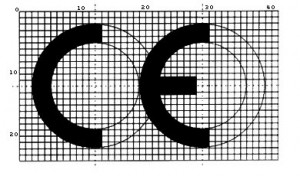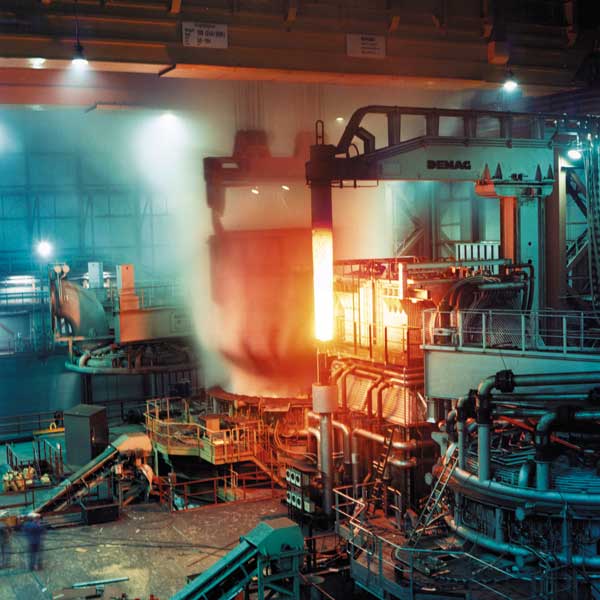Technical
CE Marking of Steel Products
CE Marking will soon be upon us, which could be a surprise to many manufacturers. David Moore, BCSA Director of Engineering, advises what should be done and what help is available.
The CE Marking of construction products was first introduced in to the UK in 1991 by the Construction Products Regulations (CPR). Despite being around for the past 15 years it is only now that the harmonized standards (which list the characteristics that products must have to meet the regulations) for products such as steel sections, structural bolts, welding consumables and fabricated steelwork are beginning to emerge.
Unlike the Eurocodes for which the overlap period with national standards is still subject to discussion and debate, harmonized standards and the product standards they support are introduced over a much shorter timescale. In most cases the period of overlap is 12 months or less. It is therefore not surprising that CE Marking and its effect on the construction industry have come as a surprise to most manufacturers, importers and suppliers of construction products.
Harmonized standards
Within the constructional steelwork community there are five main harmonized standards that control the CE Marking of steel components and fabricated steelwork. A brief review of the status of each of these standards is given below.
Steel Sections and Plate – BS EN 10025:2004 is the harmonised standard for open steel sections and plate. CE Marking to this standard was possible from 1st September 2005 and will become mandatory in most European countries from 1st September 2006.
Hollow Sections – BS EN 102129-1 and BS EN 10210-1 are the harmonised standards for cold formed welded structural hollow sections and hot finished structural hollow sections respectively. These standards have recently been published by BSI and it is anticipated that CE Marking of these sections will shortly be announced by the European Commission.
Pre-loadable Bolts – BS EN 14399-1 is the harmonized standard for preloadable bolts. This standard was published last year and CE Marking became possible from January 2006. Currently there is a 12month overlap with national standards but a proposal has been lodged with the European Commission to extend the overlap period to 2 years. If this is approved CE Marking will be mandatory in most European countries from January 2008 otherwise CE Marking will start a year earlier.
Non-preloadbale Bolts – BS EN 15048 is the harmonized standard for non-preloadable bolts. This standard is about six months behind BS EN 14399 and therefore CE Marking is not expected to start until the second half of 2006.
Conformity assessment of fabricated steelwork – BS EN 1090-1 is the harmonized standard for fabricated steelwork. This standard is currently with the CEN project team and is expected to be approved for formal vote in June 2006. If accepted by Member States it is anticipated that CE marking of fabricated steelwork will start in 2007.
Most of the above standards have either been published or are being finalized by CEN project teams. Consequently it is anticipated that CE Marking of steel components and fabricated steelwork will be with us in the next 3 months to 18 months. It is therefore imperative that the manufacturers, importers and suppliers of steel section and structural bolts are aware of the consequences of CE Marking and their responsibilities under the Construction Products Regulations. Similarly steelwork contractors should also be aware of their responsibilities as manufacturers of fabricated steel.
CE Marking – The main steps
The CPR describes two ways of complying with the regulations. The first is by CE Marking and the second is by supplying, when asked, Trading Standard Officers in England Wales and Scotland and Environmental officers in Northern Ireland with all the information you have on the product to enable the authorities to satisfy themselves that the product complies with the regulations. The penalties for not complying with the regulations are a £5,000 fine, 3 months in prison or both. Under the regulations if a product is CE Marked it is assumed that it complies with the requirements of the regulations. The same assumption does not apply to the alternative route. Therefore the legal position is much clearer for CE Marked products.
For those manufacturers wishing to adopt CE Marking the main steps are briefly set out below:
1. There must be a published harmonized standard for the product. A complete list of harmonized standards can be found on – http://ec.europa.eu/enterprise/newapproach/standardization/harmstds/reflist/construc.html
2. CE Marking cannot start until the European Commission publishes the start date. This is given in the EC’s journal called the ‘Official Journal’. A list of harmonized standards with their dates of applicability and the date of the end of the co-existence period can be found on the web site given in 1.
3. Once the start date is published there is an overlap period of 12 months to give the manufacturer time to change over from national standard to the new harmonized standard. This period also allows importers and suppliers time to run down existing stocks and replace them with CE Marked products.
4. Before a manufacturer can CE mark his products he needs to develop a Factory Production Control (FPC) system. The details of the FPCs are given in the appropriate harmonized standard and usually involve the following tasks:
- The establishment of a set of written procedures.
- Regular inspections of the testing equipment, the manufacturing equipment and the raw materials.
- Regular test and/or assessments of the product to control its essential characteristics. A product’s essential characteristics are listed in the appropriate harmonised standard.
- A procedure for using the results from b. and c. to control the incoming material, production process and the product.
- A written procedure for dealing with non-conformities.
- A procedure for recording and retaining all results requiring action and the action taken.
- For certain types of steel fabrication the FPC system requires traceability of the incoming material through the factory.
5. The FPC system must be certified by a third party independent body. These bodies are called Notified Bodies and carry out the tasks related to the conformity assessment procedures set out in the appropriate harmonized standard. Member states are responsible for their notification and Notified Bodies are answerable to national authorities. In the UK the national authority is the Department for Communities and Local Government (DfCLG). To be eligible an organisation must be a legal entity established in the country of the notifying member state. Consequently only organisations established in the European Community can become Notified bodies. The Steel Construction Certification Scheme is currently applying to become a Notified Body for EN 1090-1. A full list of Notified Bodies for the Construction Products Directive can be found on http://ec.europa.eu/enterprise/nando-is/cpd/home/index.cfm
6. Once the Notified Body is satisfied that the manufacturers FPC system complies with the CPD and has been made specific to the appropriate harmonized standard they will issue a Certificate of Conformity (CoC). The CoC includes the following information:
- Name and address of the manufacturer
- Description of the product and a copy of the information accompanying the CE Mark.
- Provisions to which the product conforms (e.g. The appropriate harmonized standard)
- Particular conditions applicable to the use of the product.
- Number of the accompanying factory production control certificate.
- Name of and position held by the person empowered to sign the declaration on behalf of the manufacturer
- Name and address of notifying body
- Condition and period of validity of the certificate
- Name of and position of the person empowered to sign the certificate.
7. The manufacturer must then produce a Declaration of Conformity (DoC) which contains similar information to the CoC.
8. It is a legal requirement under the CPR for the manufacturer to retain both the CoC and the DoC for 10years.
9. Once both certificates have been produced the manufacturer can start to CE Mark his products. The size and shape of the CE Mark are given in the Construction Products Directive and the technical information that must accompany the mark is given in the harmonized standard. The CE mark can be placed on the product, the packaging or the accompanying commercial documents. In the case of steel products the CE Mark will generally be placed on either the packaging or accompanying commercial documents.
CE marking will be with us very shortly and it is imperative that manufacturers are aware of these changes. Over the next few months BCSA will be advising its members of the benefits of CE Marking and preparing a step-by-step approach to help the manufacturers of steel products develop the necessary factory production control systems.
Further information on CE marking can be obtained from Dr David Moore at BCSA













